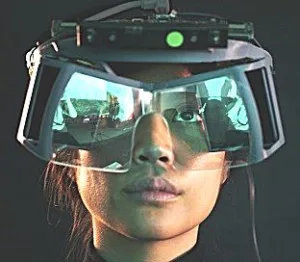During the past few years, Leap Motion, Inc. (San Francisco, CA and London, UK) has developed hand tracking technology for use as a means to interact with virtual objects in a virtual reality environment. A key feature of the Leap Motion system is that it does not require the wearer of the headset to use any form of hand held accessory to enable the tracking.

The company now wants to extend the use of their technology to augmented reality applications. To this end, the company has announced the upcoming availability of a reference design of an augmented reality headset. The headset was developed as a part of the so-called Project North Star. A main selling point of the Project North Star design is the representation by the company that the headset can meet the exceedingly low price point of $100 when the headset is produced in high volume.
To make the process of adopting Leap Motion technology as easy as possible, the company will provide the specifications for the hardware and the software used in the reference design for free, under an open source license. The company has stated that “We hope that these designs will inspire a new generation of experimental AR systems that will shift the conversation from what an AR system should look like, to what an AR experience should feel like.”
The figure below illustrates a user wearing the Leap Motion Project North Star Augmented Reality headset. Note that the headset needs to be connected to a computer.
The Leap Motion Project North Star headset prototype based on the company’s reference design.
The headset design includes two high brightness, 3.5 inch LCDs each with a resolution of 1600 x 1440 and operating at 120 Hz. Light, containing the image produced by each display, is reflected from and focused by the visor directly into corresponding eye of the wearer. The wearer sees the video graphics as a transparent overlay on top of a direct view of the surrounding environment. Leap Motion says the optical system produces graphic imagery over a vertical field of view of 95 degrees and a horizontal field of view of 70 degrees. A field of view of this size is larger than that found in most current, commercially available augmented reality systems. The Leap Motion sensor is attached to the top of the headset. The inclusion of the Leap Motion sensor will enable the headset to track the wearer’s hand motions across very wide field of view extending about 180 degrees both vertically and horizontally.
It is worth noting that the Project North Star headset “does not provide advanced room scale tracking, interaction with the environment.” In addition, without a hand held accessory device, the headset wearer is not able to receive any form of haptic feedback.
Leap Motion has posted many videos on-line that demonstrate the capabilities of the company’s headset. One such video is at the end of this article. It illustrates the view of the augmented reality environment as seen by the wearer of the headset and features examples of manipulation by the wearer of objects with their real and virtual hands and fingers.
The likelihood of achieving the $100 target price seems quite uncertain. More certain is the expectation that, if the headset works well and if the price point can be reached, Project North Star “could help pave the way for mainstream AR.” -Arthur Berman
Leap Motion, Inc., Michael Buckwald, 415-692-3860

